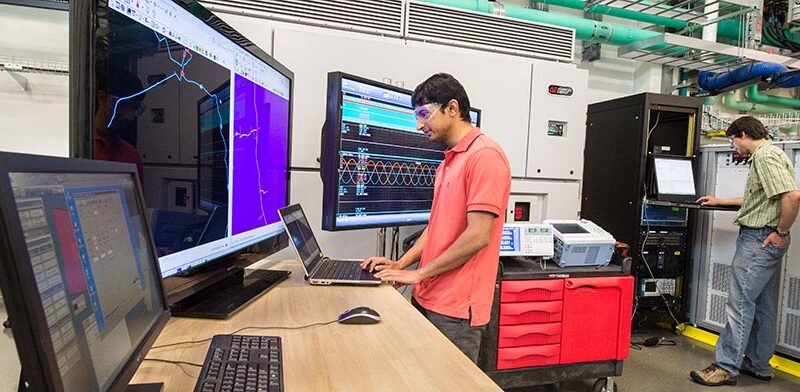Power Hardware-in-the-Loop and Grid Simulation
NREL’s power hardware-in-the-loop (PHIL) technology at the megawatt scale empowers researchers and manufacturers to conduct real-time grid simulations, allowing them to safely assess the performance and reliability of energy technologies operating at their full power capacity.
A grid simulator is essentially a programmable AC power source that can mimic various grid conditions, serving as a valuable tool for testing grid-connected equipment. NREL administers two significant megawatt-scale grid simulators: one is a 1.08-MVA grid simulator situated within the Energy Systems Integration Facility, while the other is a 7-MVA grid simulator named the controllable grid interface, situated at the National Wind Technology Center.
Hardware-in-the-loop simulation represents a seamless fusion of physical hardware and software models in a single, interconnected simulation, with PHIL taking this integration to full power levels. Through the use of software to emulate real electric distribution circuits, PHIL testing ensures that novel, cutting-edge hardware components can seamlessly interface with the utility system under actual load conditions before integration into the system. This approach permits researchers to replicate real-world situations and evaluate intricate interconnection scenarios within a controlled laboratory environment, all while posing no risk to electric utilities or their clientele.
Also Read About –
What Is an Inverter-Based Resource?
First turbine installed at Massachusetts offshore wind farm
Power Hardware-in-the-Loop Key Capabilities:
- Development of real-time power device and network software models.
- Interfacing and testing of megawatt-scale power hardware with real-time simulations.
- Conducting real-time power simulations covering a wide range of timescales, from sub-cycle electromagnetic transients to quasi-steady-state power flow simulations.
- Co-simulation that involves hardware and software subsystems across various physical locations.
- Integration of real-time models from other domains, such as communication networks and building and thermal systems, into PHIL simulations via co-simulation.




